Challenging Behaviour: Managing The Impact on Staff
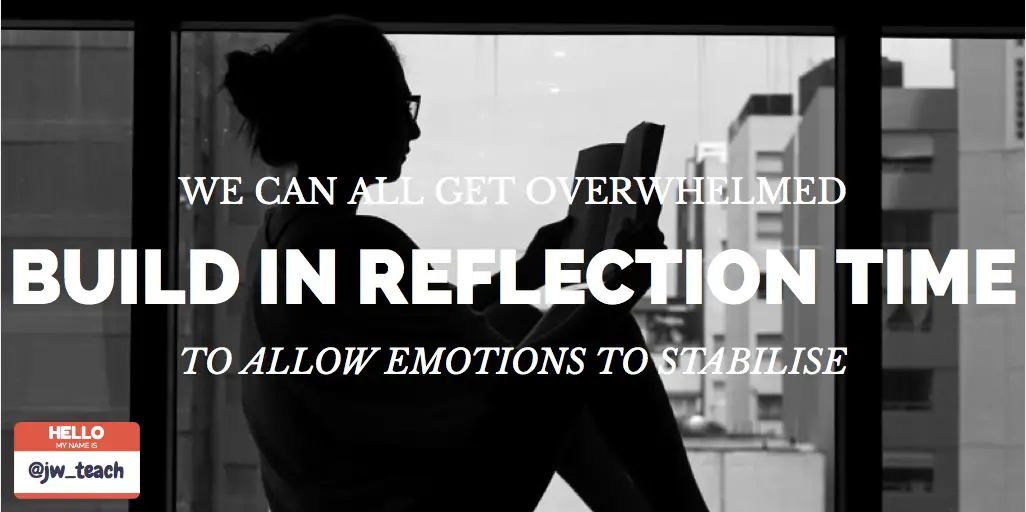
Tips for managing your emotions.
Challenging Behaviour: Managing The Emotional Impact on Yourself
Part of my current role involves training the new PBS instructors for the county special schools. This is a great opportunity to ensure a consistent approach and ethos towards challenging behaviour between schools. It is also a chance to collaborate and learn from the shared experiences with a range of really positive and passionate teachers and educators from across Kent. One of the benefits of conducting training is once you acknowledge you should not just come in and read the powerpoint, but you are a knowledgeable guide brought in to get to really engage in the issues we need to tackle in our schools.
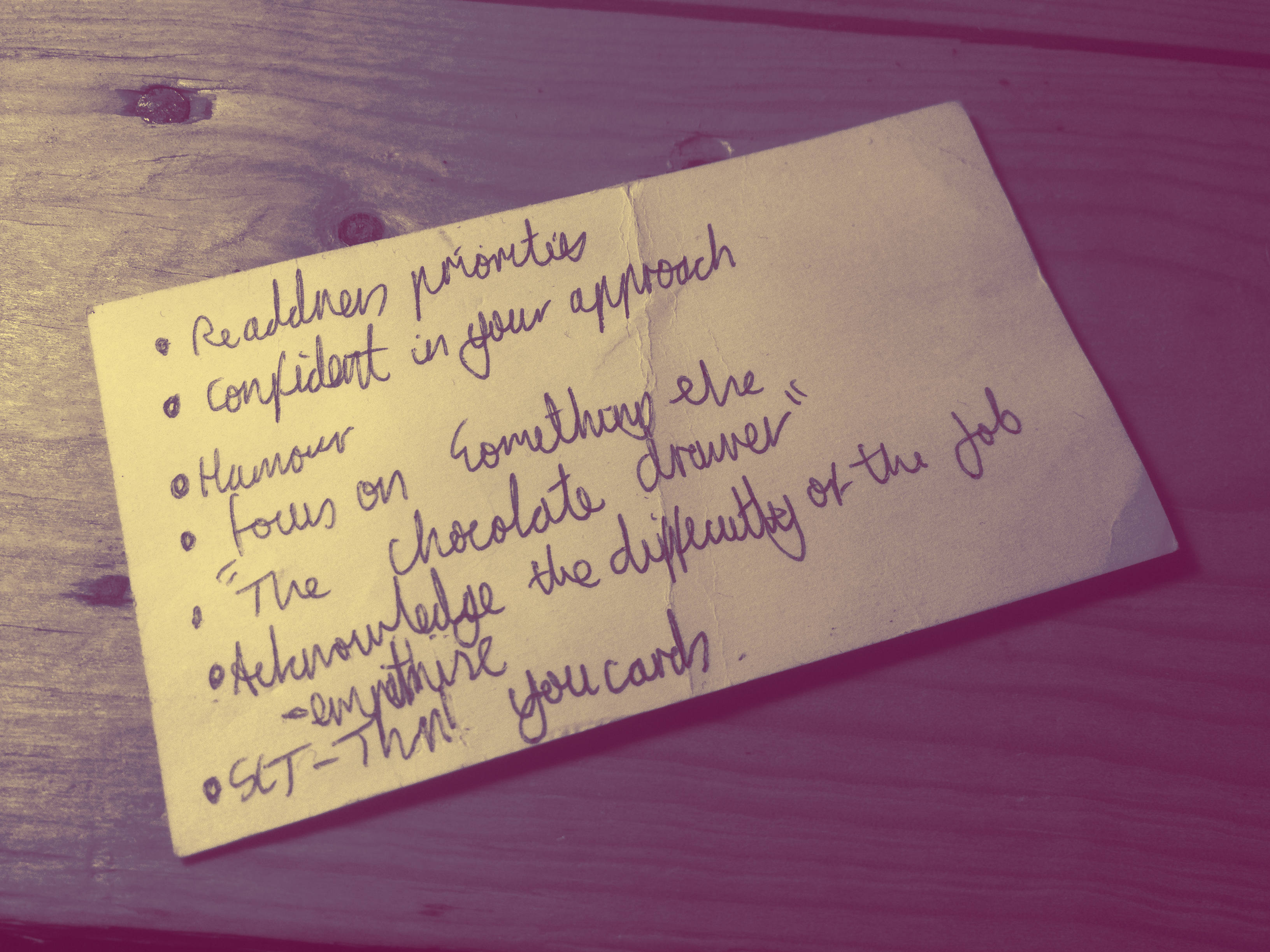
One of the areas we discussed in our last positive behaviour support (PBS) training session was the importance of being aware of our current emotional state. This becomes critical when faced with challenging situations as our reactions will in the majority of cases determine the outcome of the situation. It is also essential that as role models working with young people and vulnerable children we develop strategies to control these emotions.
Now despite leading the training I will never claim to have all the answers – an idea or strategy that worked for me with that child in that setting will not be applicable in the majority of other situations. When you sit in a room with a group of professionals there is huge potential for the sharing of practical ideas and the creation of a group toolkit that people can go and apply in their own situations, adapting as necessary. So I wrote our collective ideas down on a flashcard card and will summarise our top tips for maintaining control of your emotions below.
Top tips for managing your emotional reaction to challenging behaviour.
The key aspect that joins all of these strategies is the need for staff to feel supported within the school especially by senior leadership teams and their direct line managers. If the headteacher has not created a positive school ethos that allows you to adapt your approach to challenging behaviour this is more difficult to achieve.
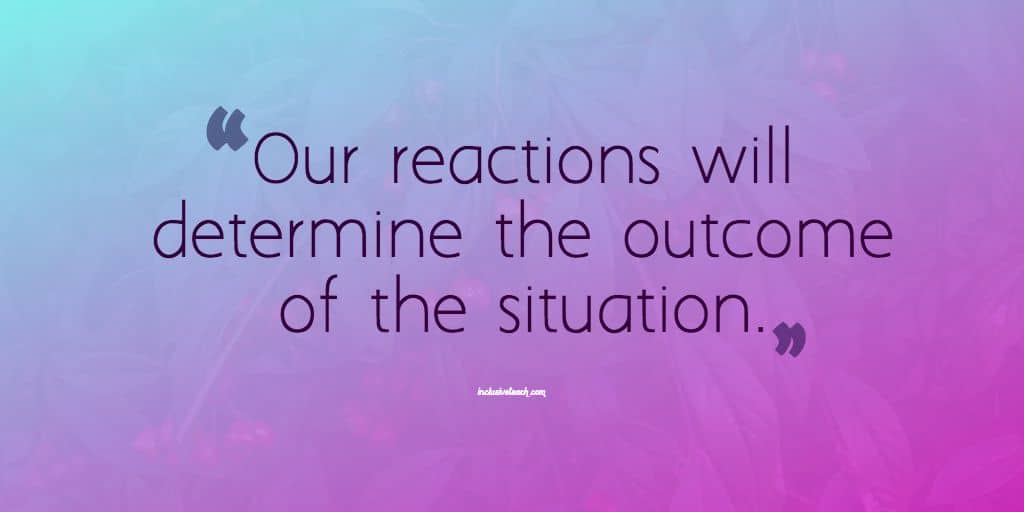
I have broken the strategies we came up with in the training for managing our emotions down into three sections:
- Baseline (Proactive, things we can do before to make sure we are prepared)
- During (Active/Reactive, strategies to try in a crisis situation)
- After (Reflect/Relax, the follow up)
Proactive Strategies (Preventive Measures):
- Environment and Structure:
- Visual Schedules: Use visual cues to outline daily routines.
- Structured Classroom Layout: Arrange desks and materials for optimal flow.
- Clear Expectations: Set clear rules and expectations for behaviour.
- Quiet Spaces: Create designated quiet areas for students to self-regulate.
- Predictable Transitions: Prepare students for transitions between activities.
- Teaching Social Skills:
- Social Stories: Use narratives to teach appropriate behaviour.
- Role-Playing: Act out scenarios to practice social interactions.
- Emotional Regulation Techniques: Teach deep breathing, counting, or mindfulness.
- Positive Reinforcement:
- Token Systems: Reward good behaviour with tokens that can be exchanged for privileges.
- Verbal Praise: Acknowledge positive behaviour immediately.
- Classroom Economy: Use play money for rewards.
- Individualized Supports:
- Functional Behavior Assessment (FBA): Identify triggers and functions of behaviour.
- Individual Behavior Plans (IBPs): Tailor strategies to each student’s needs.
- Peer Support: Pair students with peers who model developmentally appropriate behaviour.
- Communication Strategies:
- Visual Prompts: Use visual cues for instructions.
- Choice Boards: Offer choices to empower students.
- Social Scripts: Provide scripts or hero cards for social interactions.
Reactive Strategies (De-escalation Techniques):
- Crisis Prevention:
- Anticipate Triggers: Be aware of potential triggers.
- De-escalation Zones: Designate safe spaces for students.
- Nonverbal Signals: Use hand signals to redirect behaviour.
- Immediate Responses:
- Time-Out: Allow students to take a break.
- Redirection: Shift focus to a different task.
- Verbal Reminders: Calmly remind students of expectations.
- Physical Safety Measures:
- Personal Space: Teach students about boundaries.
- Restraint Techniques: Use only as a last resort and follow school policies.
- Emergency Evacuation Plans: Prepare for extreme situations.
- Collaboration and Communication:
- Team Approach: Involve teachers, support staff, and parents.
- Behaviour Contracts: Set clear consequences for behaviour.
- Crisis Intervention Teams: Train staff to handle emergencies.
- After – Post-Incident Strategies:
- Debriefing: Discuss incidents with students and staff.
- Restorative Practices: Repair relationships after conflicts.
- Follow-Up Plans: Implement changes to prevent recurrence.
Remember that a combination of proactive and reactive strategies is essential for effective behavior management in schools. Each student is unique, so tailor these strategies to individual needs. 🌟📚
I hope you find some of these helpful and I would love it if you could add your thoughts and tips in the comments section.
Baseline: How can we be prepared for challenging situations?
- Surround yourself with a supportive team/colleagues. These don’t have to be those your work closest to but others in the school who are there to support you. Leadership take note of your role in this!
- Access to good training opportunities, not just webinars.
- Follow the Teacher 5 a day initiative (If you haven’t heard of this see Martyn’s Blog)
- Thank you cards from leadership to ensure staff feel valued, any member of staff can start this, lead from the front!
Managing Emotions During Incidents of Challenging Behaviour.
- Readdress priorities – Is the worksheet really that important? Can you meet the intent of the lesson at another time when the child is less distressed?
- Be confident in your approach, children are often aware when staff are wary or don’t have a plan.
- Move away – give the child (and yourself) some breathing/thinking space.
- Assess your feelings and acknowledge when you need to swap with someone less invested in the situation. Don’t see this as being undermined.
- Give yourself time out before responding – 3 deep breaths.
- Humour – allowing yourself to laugh can de-escalate situations.
- Remember it’s not the end of the world, worse things will have happened.
After Incidents (Post Incident Support).
- Opportunity to vent feelings, alone or with a friend/colleague
- Non-judgemental debrief conducted by trained staff
- Rebuild relationship with the child using a positive or favoured activity.
- Recognise when you or colleagues need support (Yes you as well SLT!)
- The Chocolate drawer – (this is genius).
- Go for a walk or get some fresh air.


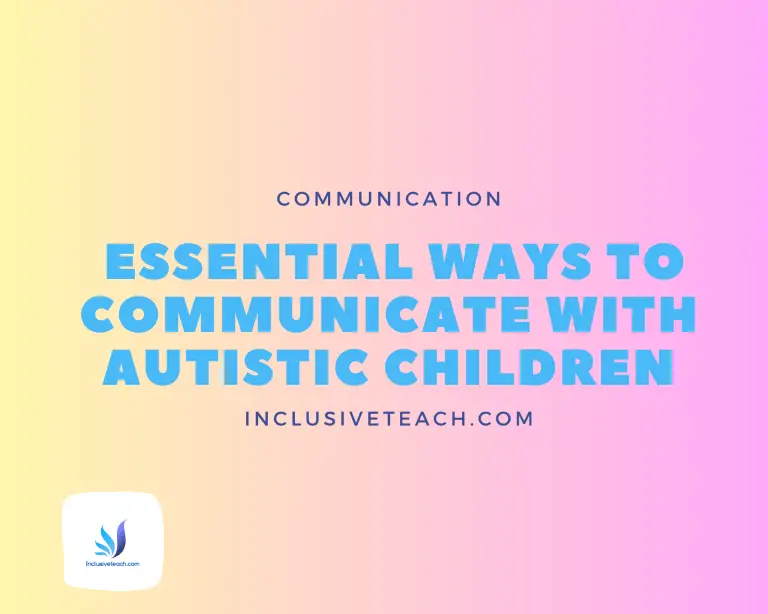
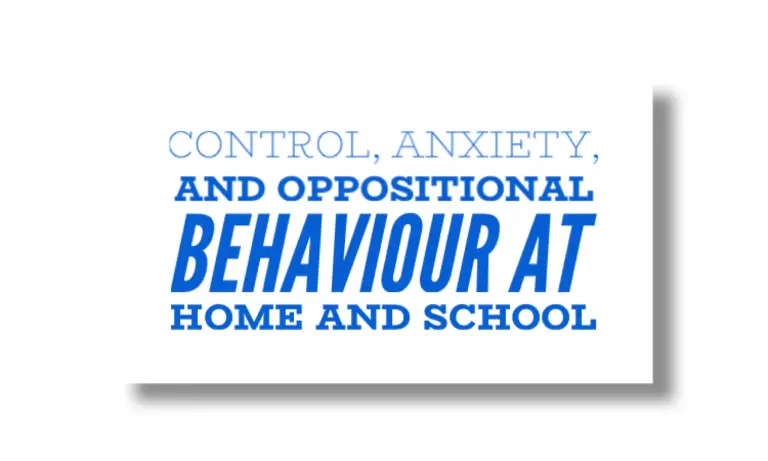


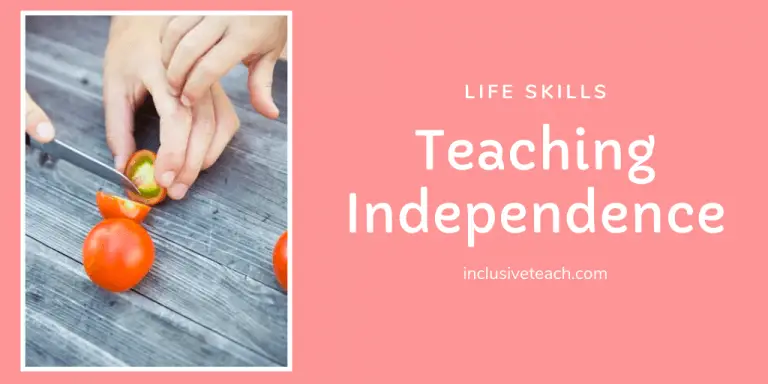

Please check out my books on behaviour – published by both Sage and Routledge and based in both research and experience. They are full of things teachers might do to change pupil behaviour, not just manage it. And teacher wellbeing does not lie in control or compliance.
Thanks for your comment Sue.
This is not a post about managing student’s behaviour. These ideas are for those who support students who display behaviours – in the context of our schools these are often extremely challenging both for the staff and students themselves.
The training we do is about supporting the students to find strategies to meet the needs they are trying to communicate. The vast majority of the students in alternative provisions have some kind of communication difficulty which leads to frustration when attempting to communicate their needs to us. We don’t always want to change the behaviour we want to find a replacement behaviour that meets the needs effectively.
As teachers we need to reflect that our Wellbeing is essential for us to work effectively in one of the most stressful occupations. As professionals we need to maintain control of those emotions – or recognise when we are not – when at work.
Really useful, practical advice. Thank you.
Will be getting a chocololate drawer.
Here’s my tuppence worth 🙂
Before:
Get enough sleep
Eat regularly
Make regular time for yourself
During:
What is the feeling behind the behaviour? What is the unmet need behind the feeling? Are you going to prioritise containing the behaviour or meeting the need? Actually this is something that it’s probably worth thinking about as a before, as it may shape your whole approach.
After:
Talk, eat chocolate, let yourself feel whatever you need to feel.
Great post, you have inspired me to blog about it from an adopter’s point of view 🙂
Fantastic please let me know when it is ready for reading!
I love your ideas.
Hi! Someone in my Facebook group shared this website
with us so I came to look it over. I’m definitely enjoying the information. I’m book-marking and will be tweeting this to my followers!
Outstanding blog and great design.